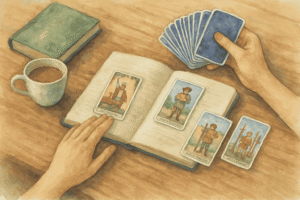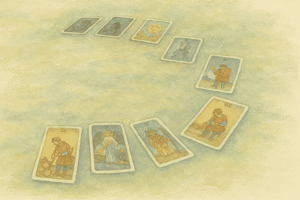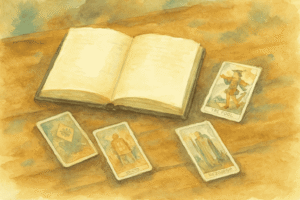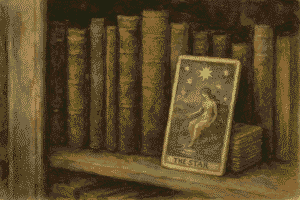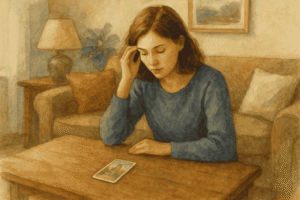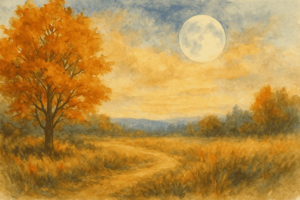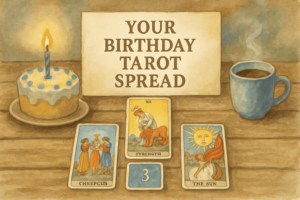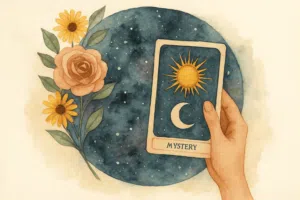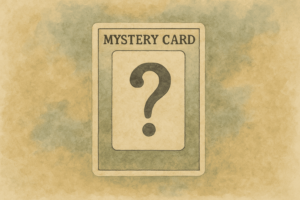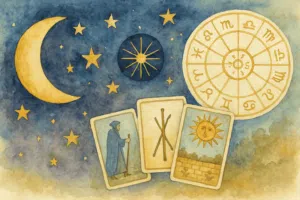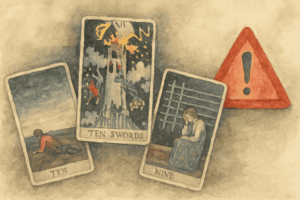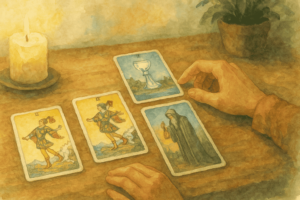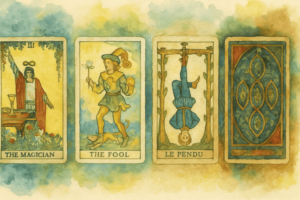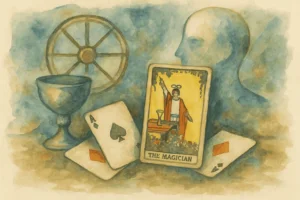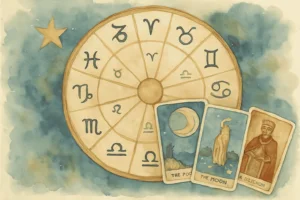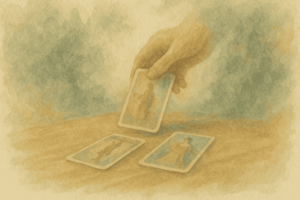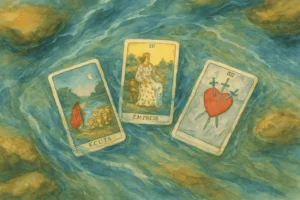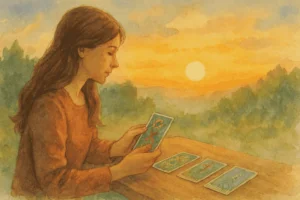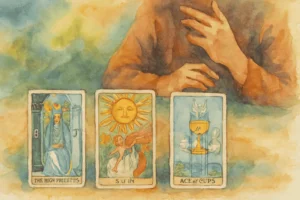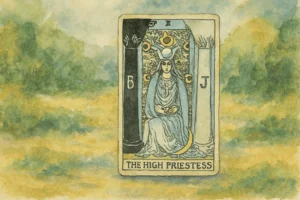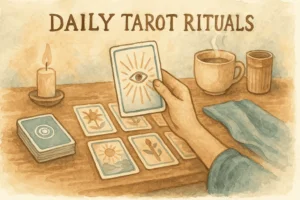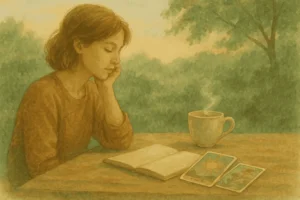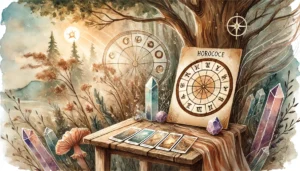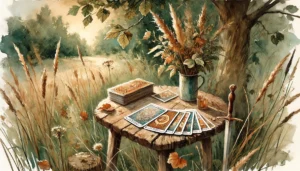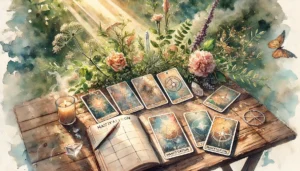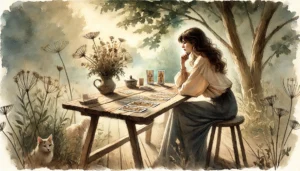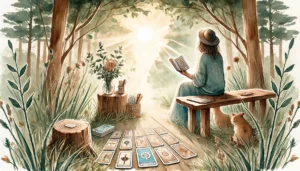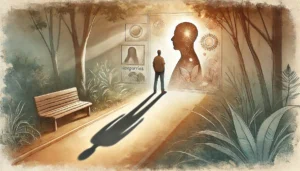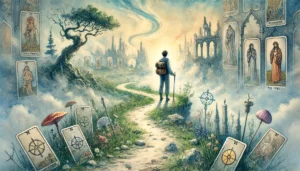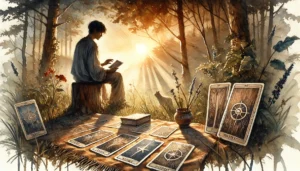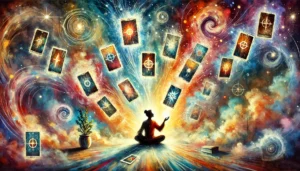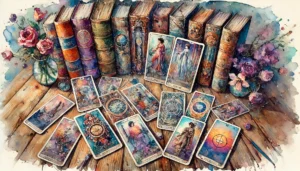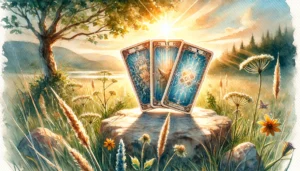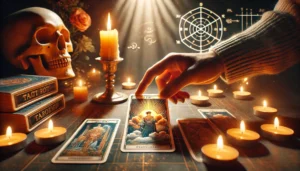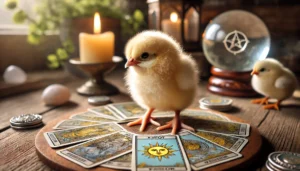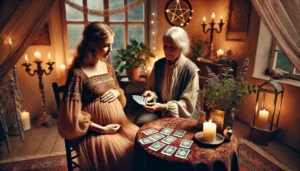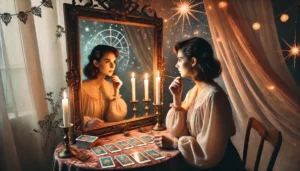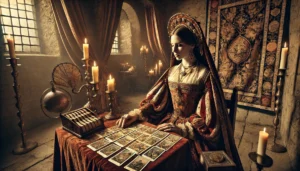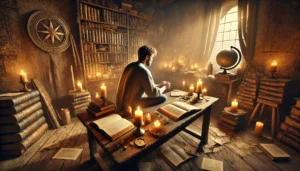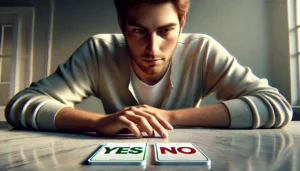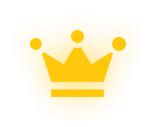Har du nogensinde følt et mærkeligt træk mod de farverige billeder af tarotkort? Mange mennesker er betaget af deres legender, men spørgsmålet bliver hængende: er tarot hekseri? Efterhånden som det moderne samfund bliver mere åbent omkring spiritualitet, er det vigtigt at dissekere de utallige overbevisninger omkring tarot, og hvordan dens opfattelse varierer på tværs af forskellige kulturer og trossystemer. Så lad os dykke dybt ind i tarotens spændende verden og afdække dens lag.
En kort historie om Tarot
Tarotkort opstod i det 15. århundrede i Europa, hvor de oprindeligt blev brugt som spillekort. Det var først i slutningen af det 18. århundrede, at tarot begyndte at få et esoterisk og mystisk ry. Tarotbunken, der består af 78 kort, gik fra et simpelt spil til et værktøj til spådom, spirituel oplysning og psykologisk indsigt. Denne udvikling afspejler menneskehedens igangværende søgen efter forbindelse, mening og forståelse af selvet.
Tarot i forskellige spirituelle og kulturelle sammenhænge
I den moderne sammenhæng omfavnes tarot på forskellige måder. Nogle udøvere integrerer tarot i deres hekseri eller hedenske ritualer, idet de ser kortene som kanaler for åndelige energier. Andre nærmer sig tarot gennem en mere sekulær linse og bruger den som et værktøj til introspektion, terapi eller endda som en unik form for kunstnerisk udtryk. Dette fører til et andet spørgsmål: er tarot iboende åndelig eller blot et psykologisk værktøj?
Overvej for eksempel salvie. Det kan tjene som en almindelig madlavningsurt eller bruges i et spirituelt renseritual - dets kraft ligger i brugerens intention. På samme måde kan ædelstene bæres som fantastiske smykker eller udnyttes i energiarbejde, hvilket afspejler personlige overbevisninger og praksis. Tarotkort kan også bruges som dynamisk kunst, tankevækkende psykologiske opfordringer eller mystiske spådomsværktøjer. I alle tilfælde former brugeren oplevelsen.
Aflivning af myterne om tarot
Det er en misforståelse, at tarot er en ond eller farlig praksis. Mange tarotlæsere og entusiaster identificerer sig ikke som hekse eller spiritualister, og de omfavner heller ikke ideen om hekseri i nogen konventionel forstand. Myterne omkring tarot stammer ofte fra misforståelser eller kulturelle skævheder. For eksempel kan nogle religiøse perspektiver finde det upassende, mens andre omfavner dets indsigt som en måde at udforske psyken og opnå klarhed i beslutningstagningen.
Ved at genkende disse forskellige synspunkter kan vi få en mere nuanceret forståelse af tarot som et alsidigt værktøj. Det bliver klart, at essensen af tarot ikke ligger i dens sammensætning, men i harmoniseringen mellem kortene og individets tankegang og overbevisning. Uanset om du søger vejledning, finder klarhed eller blot nyder det æstetiske ved kortene, åbner tarot døre til personlig vækst og selvopdagelse.
Tarot som et neutralt værktøj til undersøgelse
I sidste ende er spørgsmålet, er tarot hekseri?, er ikke så ligetil, som det ser ud til. Tarot er et neutralt instrument, formet af brugerens hensigter, overbevisninger og behov. Ligesom den samme urt kan bruges til kulinariske eller spirituelle formål, kan tarot tjene flere roller baseret på den kontekst, den er involveret i. Dette perspektiv inviterer os til at overveje, hvordan vi definerer vores praksis og overbevisninger i et hurtigt udviklende åndeligt landskab.
Rejsen forude
At integrere dig selv i tarotoplevelsen kan være transformerende, uanset om du søger klarhed, følelsesmæssig velvære eller blot et fascinerende indblik i kunst og psykologi. Interesseret i at udforske dette nærmere? Du kan endda få adgang Gratis online AI-tarotkort for at starte din rejse hjemmefra.
Referencer
- Smith, J. The Origins of Tarot: A Historical Perspective. 2021
- Psykologi i dag. De terapeutiske fordele ved Tarot. 2022
- Brown, R. Tarot og moderne spiritualitet. 2020


